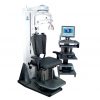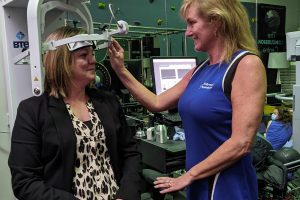
Neck Strengthening Tools: The Unsung Hero of Cervical Spine Rehabilitation
Treatment GuidelinesNearly every plan of care will focus on strengthening the injured area, whether knee, ankle, elbow, and every other joint in the body. Shouldn't cervical spine rehabilitation follow suit? Learn how neck strengthening tools can relieve neck pain, improve cervical spine injury recovery, and promote long-term health.
Neck pain is ubiquitous today and many cases of neck pain can be addressed with neck strengthening exercise. In fact, neck pain, along with low back pain, accounted for the highest healthcare expense at roughly 134 billion dollars in 2016.1 In this post, we will dive into the topic of neck strengthening tools as part of a neck pain rehab program and offer some solutions to the limitations clinicians face when rehabbing a patient with a cervical spine injury.
Why You Should Strengthen the Neck
Interestingly, for various reasons, such as practicality, patient positioning, and others (more on that later), clinicians often treat neck pain differently from pain in other joints.
For instance, if one suffers an injury at the shoulder, nearly every physical therapy plan of care will incorporate shoulder strengthening exercises. The same goes for the knee, ankle, elbow, and every other joint in the body. However, when it comes to the spine and neck, many physical therapists will stick primarily to mobility exercise and they will avoid neck strengthening exercise.
While range of motion exercises and other treatments can certainly help with neck pain, strengthening the neck is important to long-term health. Specifically, studies have demonstrated that strengthening exercises are beneficial for the treatment of cervical radiculopathies,2 whiplash associated disorders (WAD),3 and nonspecific neck pain.4 As obvious as it may seem to some, cervical spine injuries should be treated like an injury to every other joint: with mobility and strength training exercise.
The Problem with Most Neck Strengthening Exercises
One reason that neck strengthening tools are generally underutilized in cervical spine rehab is due to practicality. In most physical therapy clinics, it can be hard to design a strengthening exercise plan for the cervical spine.
Further, patients need home exercise programs where they often have even fewer exercise resources. This usually leads the clinician to prescribe isometric neck strengthening exercises using manual resistance, a wall, and the ground (or a bed/couch). Below, I’ll provide the standard neck strengthening exercises that many PTs use, and how they can be improved.
Isometric Neck Strengthening Exercises
In order to isometrically strengthen the neck in extension, you need to provide a forward resistive force against the head. This will induce active extension of the cervical spine.
Without specialized neck strengthening tools, most PTs would instruct a patient to lie supine on the floor or in a bed and extend neck backward. They will be pushing against the resistance of said surface. When seated, the patient can also use his or her hands in the “nap stretch” position, by interlacing the fingers behind the head to resist extension of the neck.
The patient can also use their hands to provide resistance in other directions, such as flexion, side-bending, rotation, and combined motions. This requires the patient to position their hands or lay down in various postures in order to impose the correct resistive force for the various motions of the neck.
Strengthening the neck using the hands as resistance has some obvious drawbacks. Needless to say, these positions can be very uncomfortable for many patients. The discomfort alone can make patients avoid doing the exercises at home, hindering their progress.
Additionally, there is no way to increase the resistance once the patient progresses. In order for the patient to continue to improve, the therapist needs to find a way to impose a greater demand on the patient’s muscles as they get stronger.
One way to address these issues is the use of resistance bands. However, devising an easily adjustable band contraption for neck strengthening in the clinic can be tricky. Again, the difficulty is even greater for home exercise. Then there’s the problem of controlling and increasing resistance levels. Exercise bands change resistance as they lengthen, so the patient doesn’t get consistent neck strengthening through their range of motion. Plus, the variable resistance makes it difficult to quantify strength gains or identify imbalances.
Isotonic Neck Strengthening Exercises
Another way to strengthen the neck is with isotonic neck exercises. Isotonic neck strengthening requires an understanding of gravity and how to position the body in order to use the weight of the head for exercise.
Based on their individual diagnoses, certain patients should limit their range of motion when performing isotonic neck exercise. Pillows and other simple tools can prevent the head from hanging too far over the table into cervical extension, for example.
Much like isometric movements, isotonic neck strengthening movements can be complicated and often require significant patient education. This education is necessary to ensure that they understand the basic principles of gravity and neck motion needed to successfully complete these exercises at home.
Unfortunately, both for isotonic and isometric neck strengthening, many patients will quickly hit a ceiling (metaphorically). Increasing the resistance to continue challenging and strengthening the neck using these techniques is difficult at best. The same goes for pulleys, which requires a head harness. Furthermore, many patients experience discomfort with some of the positions for these exercises, as described previously.
How To Strengthen the Neck More Effectively
How can you strengthen the neck with a more practical, functional, and effective exercise? This was the challenge BTE answered with the Multi-Cervical Unit (MCU), a neck strengthening and evaluation tool designed for cervical spine rehabilitation clinics.
The Multi-Cervical Unit provides a safe, effective, and comfortable way for patients to increase their neck strength and stability. Specifically, the MCU works by facilitating cervical spine resistance at any angle, including flexion, extension, lateral flexion, and rotation.
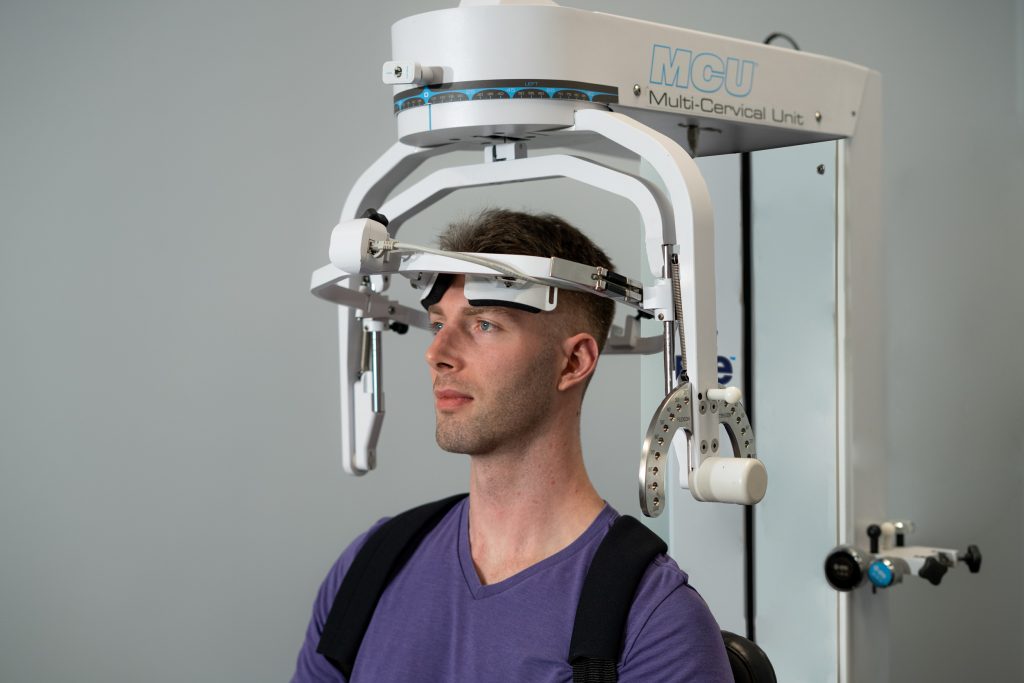
For a deep-dive on evidence-based neck strengthening techniques, patient case studies, and more, download the e-book: Don’t Just Manage Neck Pain. Fix it for Good. In this e-book you’ll discover the latest neck pain solutions for long-term relief, including:
- Clinical research: Evidence-based practices for neck strengthening
- Patient Stories: Real, life-changing experiences from neck pain patients
- Case Studies: Hear directly from chiropractic and physical therapy clinic owners and practitioners about their strategies for success
Data-Driven Neck Strengthening Exercise with MCU
During exercise, the MCU provides consistent weight resistance through the patient’s entire range of motion. The therapist can add or reduce weight in small increments for safe and effective neck strengthening. Between sessions, the MCU’s evaluation protocol provides the therapist with objective cervical spine assessments. The MCU’s evaluation reports show detailed charts and graphs on the patient’s changes in strength and range of motion.
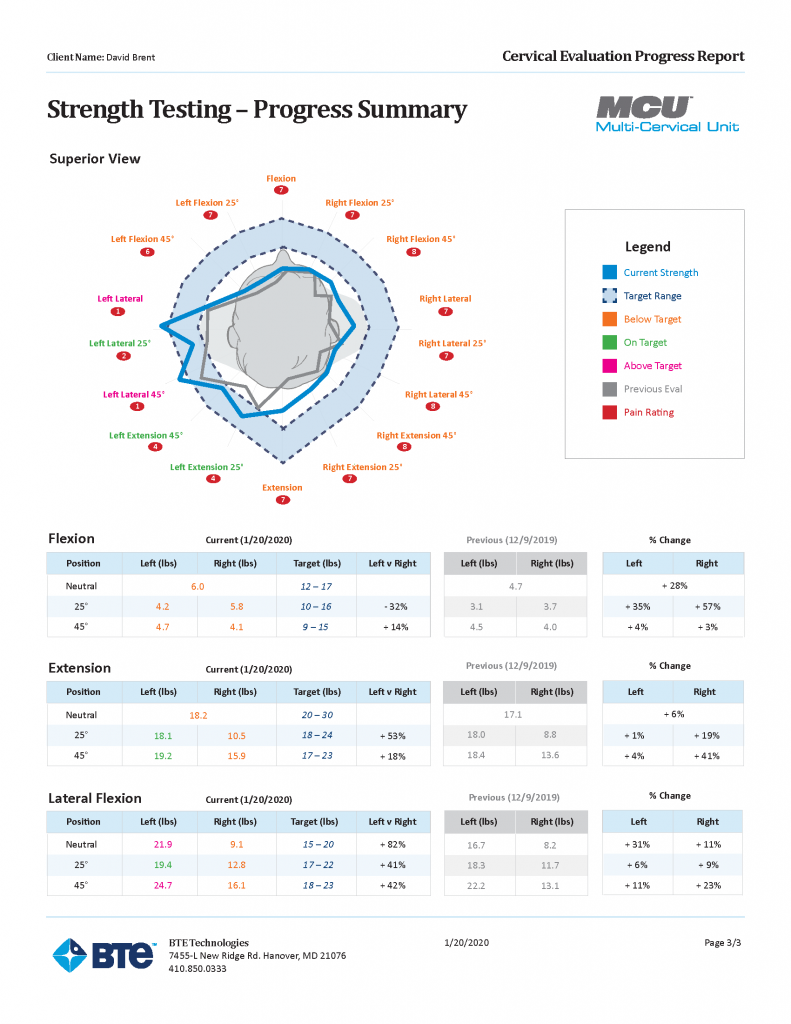
The MCU is well-liked by clinicians and patients alike for its ability to overcome the limitations of resistance bands and traditional neck strengthening exercises. Case in point, Dr. Edo Zylstra, DPT and owner of KinetaCare, points out that resistance bands “[make it] hard to know how much resistance we need to add and there’s pull only in one direction so you’re not getting resistance through the whole range of motion.” Because of the MCU’s unique design, therapists can administer constant resistance throughout the entire range of motion, regardless of the desired neck motion.
Natalie Perkins is another cervical spine rehab clinician who has found success with the MCU. Early on in her clinical practice, she was able to help many patients improve their neck pain with manual therapy. However, she was frustrated by the limitations present when attempting to strengthen the neck. She states, “It was so obvious, what’s missing is neck strength. With the MCU we can finally address the underlying problem. No other system gives a graded strengthening in the functional position of sitting.”
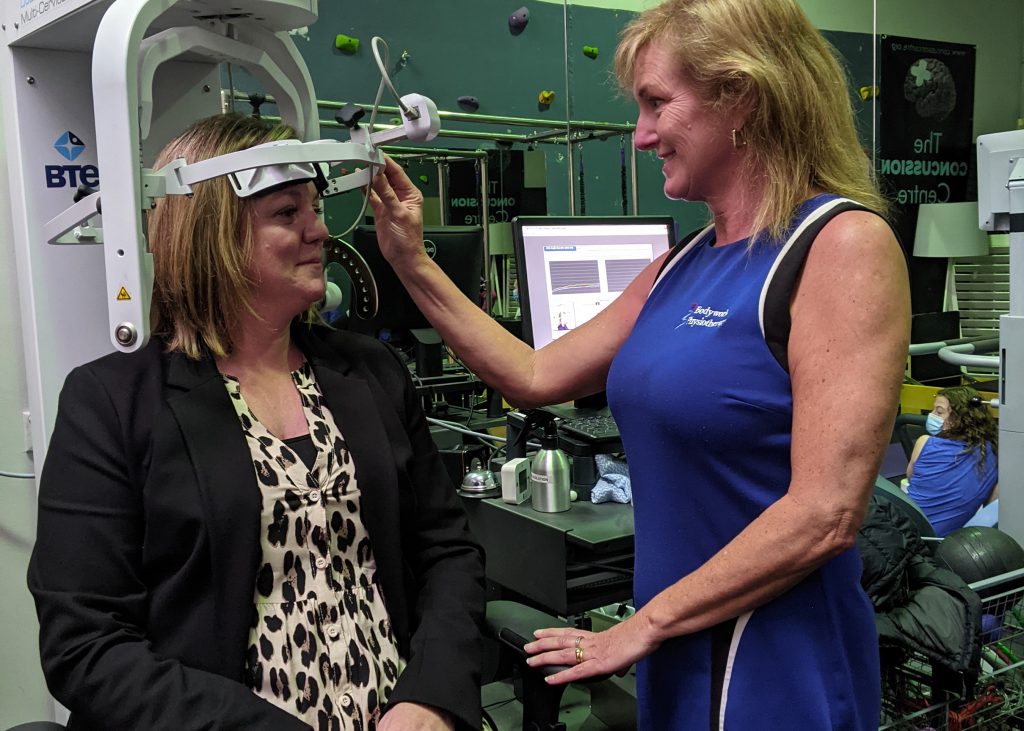
Conclusion
Virtually all musculoskeletal conditions necessitate a program which incorporates ROM, flexibility, stability, and strengthening exercise. Unfortunately, for several reasons, strengthening the neck can be particularly tricky both at home and in the traditional PT clinic.
The MCU provides a convenient, effective way of strengthening the neck. Additionally, the device provides detailed feedback to the clinician and patient about their performance, allowing for easy progression or regression, as needed. Have you been searching for a better way to strengthen the neck in your clinical practice? Contact us today to learn what the MCU can do for your practice and your patients.
Bennett Richardson, PT, DPT, CSCS is a Physical Therapist and writer. He is the owner of Richardson PT LLC, a mobile, cash-based physical therapy service out of Pittsburgh, PA. Ben is passionate about many health-related topics including weight loss and athletic performance. To get in touch with Ben, visit www.richardsonpt.com


